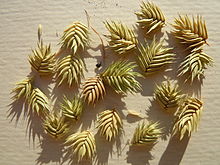
Marrubium is a genus of flowering plants in the family Lamiaceae, native to temperate regions of Europe, North Africa, and Asia as far east as the Xinjiang region of western China. A few species are also naturalized in North and South America.

Hyssopus (hyssop) is a genus of herbaceous or semi-woody plants in the family Lamiaceae, native from the east Mediterranean to central Asia as far east as Mongolia. They are aromatic, with erect branched stems up to 60 cm long covered with fine hairs at the tips. The leaves are narrow oblong, 2–5 cm long. The small blue flowers are borne on the upper part of the branches during summer. By far the best-known species is the herb hyssop, widely cultivated outside its native area in the Mediterranean.

Hordeum is a genus of annual and perennial plants in the grass family. They are native throughout the temperate regions of Africa, Eurasia, and the Americas.

Secale is a genus of the grass tribe Triticeae, which is related to barley (Hordeum) and wheat (Triticum). The genus includes cultivated species such as rye as well as weedy and wild rye species. The most well known species of the genus is the cultivated rye, S. cereale, which is grown as a grain and forage crop. Wild and weedy rye species help provide a huge gene pool that can be used for improvement of the cultivated rye.

Alopecurus, or foxtail grass, is a common and widespread genus of plants in the grass family. It is common across temperate and subtropical parts of Eurasia, northern Africa, and the Americas, as well as naturalized in Australia and on various islands.
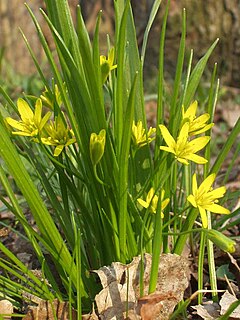
Gagea is a large genus of spring flowers in the lily family. It is found primarily in Eurasia with a few species extending into North Africa and North America.

Agropyron is a genus of Eurasian plants in the grass family), native to Europe and Asia but widely naturalized in North America.
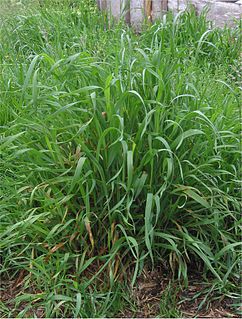
Elymus repens, commonly known as couch grass, is a very common perennial species of grass native to most of Europe, Asia, the Arctic biome, and northwest Africa. It has been brought into other mild northern climates for forage or erosion control, but is often considered a weed.

Leonurus is a genus of flowering plants in the family Lamiaceae. It is native to Europe and Asia, naturalized in New Zealand, Hawaii, New Caledonia, and much of North and South America.

Elymus is a genus of perennial plants with approximately 150 species in the grass family, related to rye, wheat, and other widely grown cereal grains.
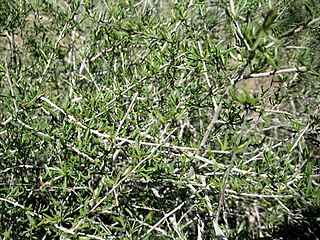
Pteropyrum is a genus of plants in the family Polygonaceae. Plants of the World Online accepts two species, native to Iran, Oman and the Gulf States.

Kobresia is a genus of plants in the sedge family. They are sometimes called bog sedges. These perennial sedges are quite similar to Carex species in appearance. The genus is widespread across much of Europe, Asia and North America, with many species native to the Himalayas.

Eremurus is a genus of deciduous perennial flowers, also known as the foxtail lilies or desert candles. They are native to eastern Europe and temperate Asia from Turkey + Siberia to China.

Halothamnus is a genus in the subfamily Salsoloideae of the family Amaranthaceae. The scientific name means saltbush, from the Greek ἅλς (hals) "salt" and θαμνος (thamnos) "bush". This refers either to salty habitats or to the accumulation of salt in the plants. The genus is distributed from Southwest and Central Asia to the Arabian peninsula and East Africa.

Heteranthelium is a genus of Asian plants in the grass family. The only known species is Heteranthelium piliferum, native to Central Asia, Afghanistan, Pakistan, Iran, Middle East, Turkey, and the Caucasus.

Gymnospermium is a group of tuberous flowering plants in the barberry family described as a genus in 1839. It is native to temperate Europe and Asia.
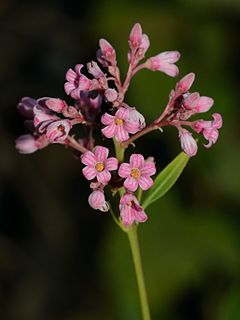
Apocynum venetum, commonly known as sword-leaf dogbane, is a plant species in the dogbane family, poisonous but used as a source of fiber, medicine, and nectar for production of honey. Apocynum venetum leaves have been used in the traditional medicine for hypertension treatment.
Garhadiolus is a genus of Asian plants in the dandelion tribe within the daisy family.
Kengyilia is a genus of Asian plants in the grass family. The genus is named in honor of Yi Li Keng.
Psylliostachys is a genus of flowering plants belonging to the family Plumbaginaceae.
